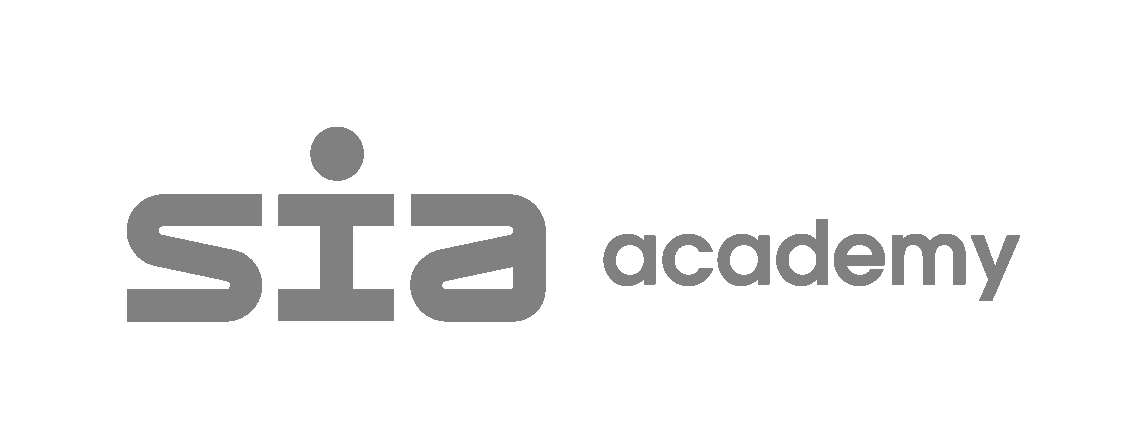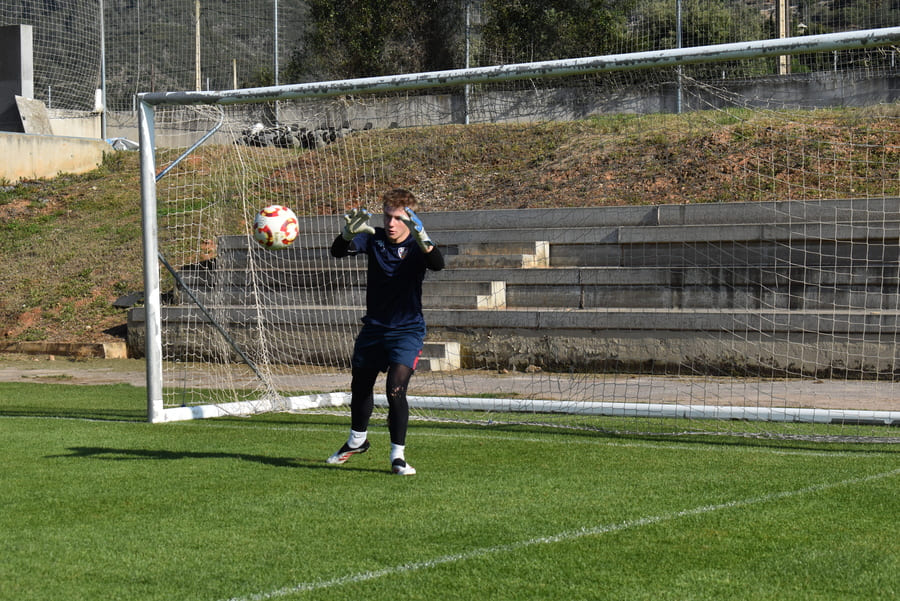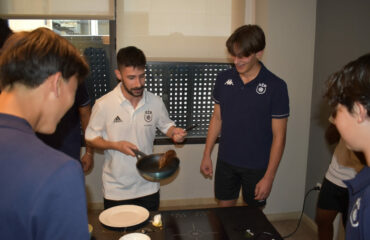In modern football, the goalkeeper is no longer just a guardian under the posts. The evolution of the game has turned this figure into the first builder of offensive plays and a constant support for the defense. That is why working on footwork in young goalies has become an essential aspect, almost as important as hand skills or reaction speed in goal.
Table of contents
Why footwork is essential in young goalkeepers
For many years, goalkeeper training focused mainly on reflexes, catches, and dives. However, today’s game requires the goalkeeper to be an active part of ball circulation. A poor pass or a bad touch can mean a chance against the team.
At early ages, the sooner technical actions related to passing, control, and body positioning are internalized, the more natural it will be for the goalkeeper to include them in their skill set. This way, learning doesn’t become an extra task but a habit integrated into training routines.
In addition, a goalie with good footwork transmits confidence to their teammates. Defenders can take more risks when pressing, knowing that the goalkeeper will be able to resolve difficult situations with a precise touch.
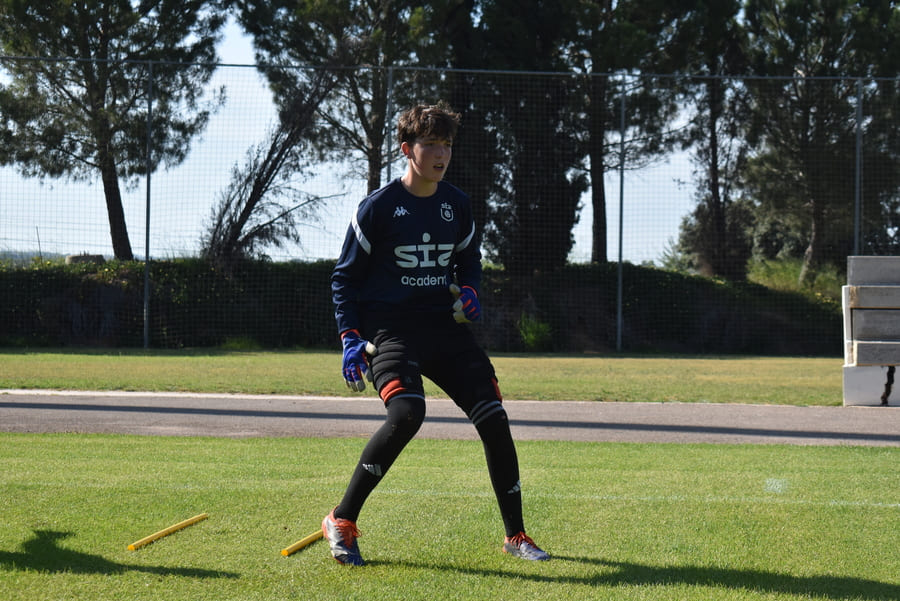
Main aspects to train
To improve footwork in young goalies, several key components should be developed:
- Body orientation: the goalie must learn to position themselves to always see the field and keep different passing lines open.
- First touch control: not only stopping the ball, but giving it a touch that prepares the next action.
- Short and medium passes: both with the inside and the instep, prioritizing accuracy over power.
- Long kicks: with proper technique, avoiding divided balls and aiming for well-positioned teammates.
- Decision-making under pressure: simulating situations where the goalkeeper receives the ball with opponents nearby and must decide within seconds.
Methodology in a high-performance academy
In elite training centers such as SIA Academy, goalkeeper work is integrated into a global plan that includes technical, physical, and mental aspects. The idea is not just to train isolated drills, but to replicate real match contexts where the goalkeeper must use their feet as a regular resource.
José Luis, goalkeeper coach at SIA Academy, explains: “The goalie of the future cannot be understood without solid footwork. It’s not enough to save, you have to know how to play. We emphasize that every control and every pass is an opportunity to keep the team’s play going.”
In this way, training is not limited to repetitive routines but is combined with global tasks where the goalkeeper actively participates in possession exercises, build-up play, and transitions.
Practical examples of exercises
Some of the most common and effective exercises for young goalkeepers include:
- Restricted rondos: including the goalie as a support player in 4 vs 2 or 5 vs 2 rondos, forcing them to control and pass quickly under pressure.
- Build-up play simulations: starting plays from the goalkeeper, who must decide between playing short with the center-backs or going long to full-backs or midfielders.
- Two-footed control and passing drills: specific sequences where the goalkeeper receives balls from different angles and must control and return them with their weaker foot.
- Conditioned pressure drills: training situations where an opponent simulates pressing the goalkeeper, encouraging quick decision-making.
All these drills must be accompanied by constant corrections in posture, peripheral vision, and verbal communication.
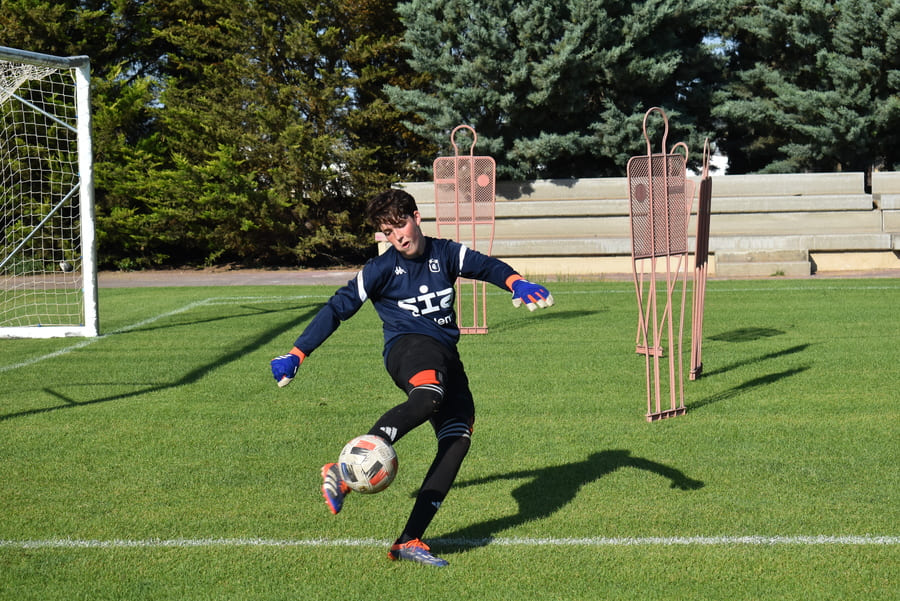
Medium- and long-term benefits
A young goalie who trains footwork properly not only improves immediate performance but also increases their chances of progressing in the future. Nowadays, professional clubs look for complete goalkeepers who can start plays and provide alternatives in build-up situations.
José Luis sums it up clearly: “If a goalkeeper doesn’t handle footwork, they’re limited. With hard work and consistency, any young player can turn that weakness into a strength that makes the difference.”
The role of confidence
The psychological component should not be forgotten. Many young goalies feel pressured when playing with their feet because they fear making mistakes. It is essential that training is designed to build confidence, allowing them to make mistakes and learn from them. When the player understands that each mistake is part of the learning process, their development becomes much stronger.
Footwork in young goalkeepers is not a complement, it is an indispensable requirement in modern football. Working on it from the earliest stages allows the goalie to grow naturally in this area, becoming a more complete and confident player.
Specialized centers such as SIA Academy have understood this need and integrated footwork development into their daily methodology. Thanks to this, their goalies not only learn to stop shots but also to build plays, being protagonists at both ends of the pitch.

